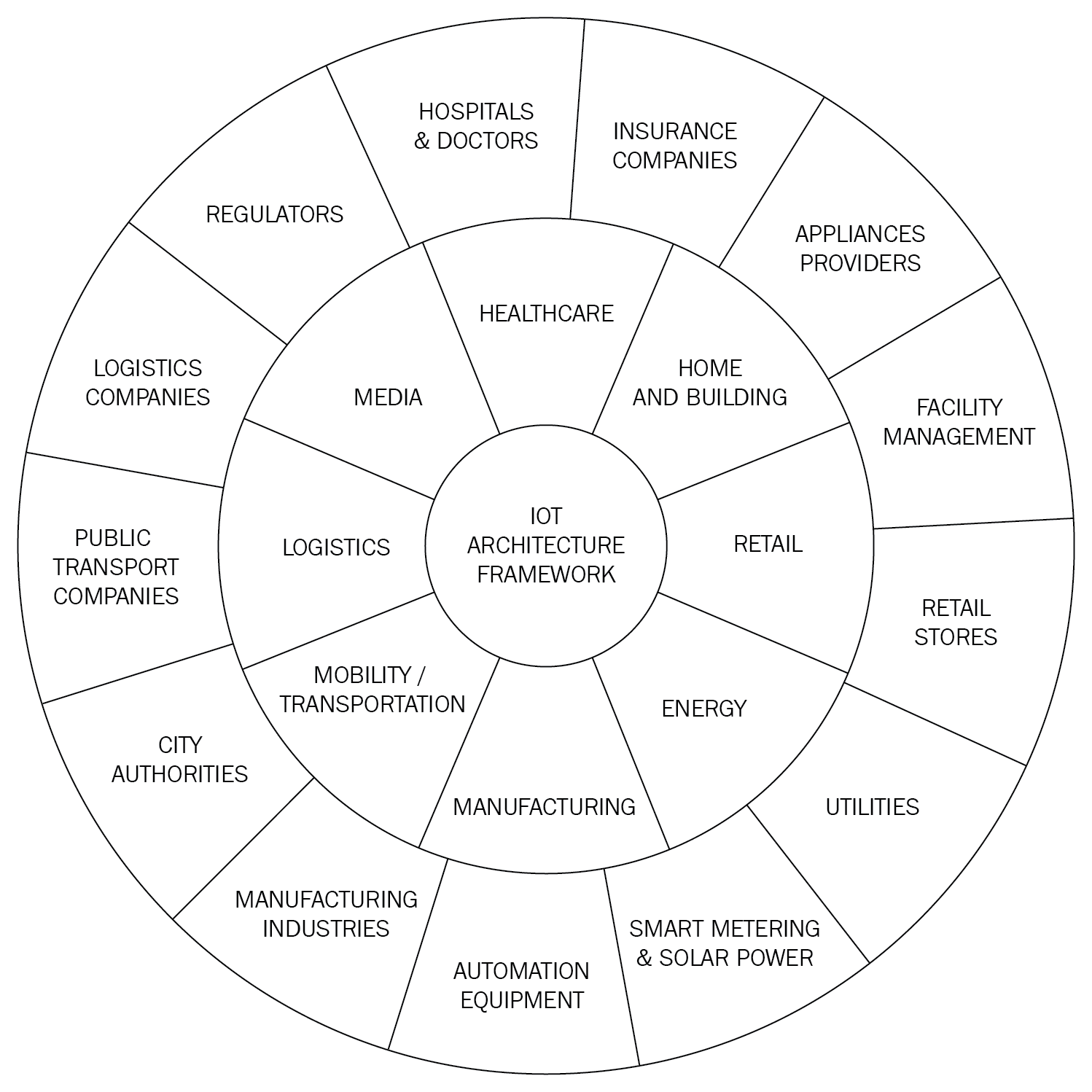Here are some statistics that show the future prospects of the Internet of Things:
- Gartner, Inc. believes that by 2020 the number of connected devices will reach 25 billion. The Internet of Things has become a powerful force for business transformation, and its disruptive impact will be felt across all industries and all areas of society.
- According to Gartner, Inc., more than 50% of new business processes will contain devices connected to the internet.
- The total economic impact of IoT, including consumer surplus, is estimated to be between $3.9 and $11.1 trillion in 2025.
- According to Nasdaq, there will be close to 80 billion connected devices by 2025.
A detailed view of IoT applications in different industries is represented in the following figure:

Let's understand in a bit more detail about IoT applications in different industries:
- Household devices such as refrigerators, lighting, washers, and thermostats can be controlled by mobile applications from anywhere. The market for these smart home appliances is expected to grow to $122 billion by 2022.
- Wearable devices such as the Fitbit, which tracks body movement and calorie consumption, have already become mainstream.
- Connected vehicles are already in the market from big players such as Honda, VW, and Tesla, which are leading this sector. Looking at the recent development of self-driving technology, autonomous vehicles no longer remain unimaginable.
- Manufacturing plants and factories will be able to monitor their own health and predict maintenance at the right time, which will increase lifespan with minimal downtime. Manufacturing is expected to be one of the largest contributors to the overall growth of IoT and is projected to reach $913 billion by 2018.
- Power grids and solar plants will be connected to the internet, which will help the distributor supply power more effectively to the end user, keeping track of actual usage and preventing theft, among other benefits.
- Sectors positioned to benefit from IoT growth include:
- Connected device manufactures: Creators of wearables, smart meters, and home appliances
- Network providers: IoT needs fast, secure, and reliable network interconnection for devices and systems
- Semi-conductor: There will be significant demand for microcontrollers, flash devices, and sensors
































































